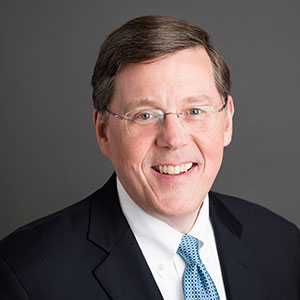Q&A with Jim Wynne, CPO, Vice President, Boston Orthotics & Prosthetics
Posted on
Jim Wynne has more than 25 years of experience as a certified orthotist/prosthetist and has been with Boston Orthotics & Prosthetics since 1993. As Boston O&P’s director of training and education, Jim conducts national and international training seminars on the theory and practice of the Boston Brace System as well as other innovative products developed by Boston O&P.
 What made you decide to get into the orthotics/prosthetics field?
What made you decide to get into the orthotics/prosthetics field?
After college, I taught high school physics and math for a few years along with coaching football and track. I enjoyed it, but I knew it was not a long-term career path. My sister is a physical therapist, and while visiting her in a clinic I met the orthotist/prosthetist at her rehab hospital. I found myself spending more time with the orthotist/prosthetist than I did in the physical therapy gym.
You’ve been very involved in the field of orthotics and prosthetics, including a position as president of ABC and serving on the board of directors for SOSORT. What has driven you to become so involved in the industry?
I believe in the profession and have been fortunate to be able to pursue those opportunities. My work with ABC started as a volunteer surveyor for facility accreditation. That developed into being on the Accreditation committee, to joining the board and eventually serving as president in 2015. It’s important to give back to the profession and an honor to help guide its direction forward. Our scoliosis outcome data as well as the principles of the Boston Brace systems have been presented at SOSORT several times. Keeping up to date with scoliosis research has assisted in the evolution of the Boston Brace system over the years.
You have held a few positions over your years with Boston O&P–what has led you to focus on pediatrics and training?
Pediatrics is special. I had a football coach in high school who told us that if every one of us wanted the ball when it was 4th and goal on the goal line, we would be champs. At that time, I didn’t necessarily want the ball—I was afraid I would fumble. But with pediatric orthotics and prosthetics, I want the ball. The kiddos you meet and the families you get to know are special. To be able to meet with like-minded clinicians that share a passion for pediatrics and to collaborate with them and share our experiences and techniques so they can serve the children in their areas is very rewarding.
In your long and distinguished career, you must have had opportunities to work at other companies in the industry. What made you decide to stay with Boston O&P?
The culture here has always been patient first. Take the time to treat the patient in front of you and do your best to work with the patient, their family and the rest of the medical team to obtain the best possible outcome and the rest will take care of itself. Other companies may say that, but we live it.
How would you say Boston O&P differs from other companies, both in terms of the company itself and the products it makes?
We are unique in that we have both a clinical care division and a central fabrication, so we are able to incubate new innovations in our clinics, review the outcomes, and then share that information with the profession so they can have similar positive experiences with their patients.
What’s the most significant development in orthotics and prosthetics care you’ve seen in your 25 years with Boston O&P?
Technology in general, scanning in particular. From the patient’s perspective, it is so much easier, cleaner and quicker to be scanned than being casted or just having measurements taken. To scan a patient and have an electronic record of that patient’s shape so we can then modify in CAD has allowed us to enhance the fit and function of those devices.
You’re very involved in training practitioners on the theory and practice of the Boston Brace System and other products. What are some of the most important things you’ve learned from these trainings?
That our profession is strong, viable and has a bright future. The people entering our profession now have a fuller understanding of the patient’s needs and comprehend their role in the medical team. Rather than spending all their time in the lab modifying and fabricating, today’s clinician relies on the expert skill of the CAD technician to make the proper modifications, so clinicians can spend that time with the patient—completing a thorough exam, measuring outcomes, assessing clinical goals, and developing a comprehensive treatment plan.
You still see patients through various clinics—what’s the most enjoyable part of that?
Patient interactions. Talking with them and their parents about their achievements and goals. For those patients we have worked with before, its finding out what is working best so we can improve the function of the new orthosis/prosthesis.

